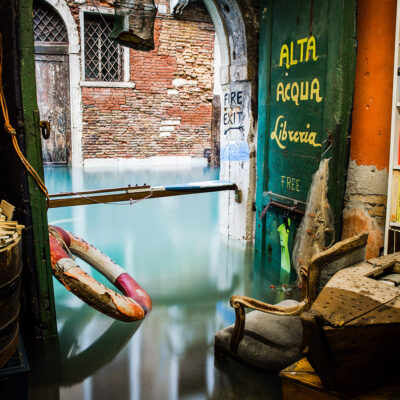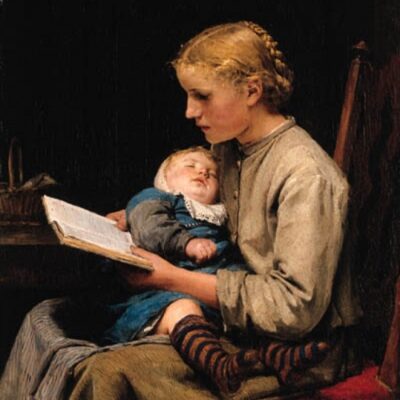The Seed Keeper by Diane Wilson
In an interview, Diane Wilson stated that, “At its heart, this novel is a tribute and a prayer and a gesture of gratitude to the seeds that have sustained indigenous communities for thousands of years. Even beyond that, seeds are fundamental to the complex web of relationships that connect a cycle of life on this earth, from plants to animals to human beings. Holly Young’s exquisite beadwork on the cover of The Seed Keeper captures this interweaving of relationships, and the reciprocity that is essential to maintaining a fragile balance between relatives. Despite the trauma of the past several hundred years, this tender connection to the earth is still central to our identity as indigenous people. Holly’s artwork, and the stories in the novel, remind us that reconnecting with the beauty and the joy of our precious seeds is healing, and a pathway to cultural recovery.”
Diane Wilson is a Mdewakanton descendent, enrolled on the Rosebud Reservation, and lives in Shafer, Minnesota. She first learned about seeds in 2000, when she was working on a memoir titled Spirit Car: Journey to a Dakota Past, that traced her Dakota family back to the 1862 U.S.-Dakota War. A tiny garden in Farmington was growing a collection of old, tribal seeds that included corn that had been carried on the Cherokee Trail of Tears, Hopi Black Turtle Beans, and tobacco that was said to be more than 800 years old. Wanting to find out more about these seeds, she began to volunteer with Dream of Wild Health, a local Native nonprofit organization. As a writer, she became fascinated with the idea of seeds as knowledge holders, as story keepers of countless generations.
In the same interview, the author shared the importance of protecting her ancestors’ seeds for future generations:
Shortly after I began working with the seeds, I heard about the Dakota Commemorative March in 2002. This event was a 150-mile walk to honor the 1700 Dakota women, children and elders who were force-marched from the Lower Sioux reservation to a concentration camp at Fort Snelling after the 1862 U.S.-Dakota War. This was the first time this history had been acknowledged. The week-long November march was a grueling, painful, beautiful, healing experience. I had a conversation with one of the marchers who shared the story about the Dakota women who hid their seeds in the hems of their skirts, in their pockets, not knowing where they were being sent. They protected those seeds even when families were starving, which is why we have Dakota corn to grow today. That story really touched my heart and helped me realize how strong these women had to be to ensure their survival.
Through my work and my writing, I’ve learned that it’s healing to know the history and stories of where we come from. Despite the loss and the trauma, we need to remember the strength of our ancestors, their courage, their prayers for future generations, and their determination to survive. That kind of strength comes from a great, selfless love that is at the heart of indigenous communities. As we say in Dakota, Mitakuye Owasin. We Are All Related. As I grow this Dakota corn in my own garden, I feel the love of my ancestors, as well as my responsibility to share these seeds and their stories.
In telling this haunting story, the author alternates between the contemporary story of Rosalie Iron Wing and those of her ancestors. “In vignettes, she illustrates parts of Dakhota history: the terror of being forced out of their homes, or the helplessness of parents when their children were taken away. The connecting link between the stories is always the connection to seeds, cultivating the earth. The women of the tribe were the seed keepers, carefully preserving seeds from each harvest so they would be able to feed their families in the years to come. Rosalie is one of a long line of seed keepers – but it is going to take a lifetime for her to come to terms with her history.”
The Seed Keeper is historical fiction at its best, superb writing that introduces events from the past ignored in our history books. When Rosalie returns to the place of her birth, seeking to reclaim “a relationship with the earth, water, stars, and seeds that was thousands of years old,” she discovers changes that make her weep.
I searched in a broader circle, convinced that my memory was wrong, that the sugar maples should be seventy-five feet tall by now. Nothing. I grew dizzy searching; I grew old remembering. And then I felt the chill of fresh knowledge, the understanding that comes when resistance gives way. I had to see with my young eyes to understand what had happened. Here, where I had first looked, here is where they stood. Here is where we offered čhaŋšáša, where I learned to set traps and carry heavy buckets of tree sap. Beneath the snow I knew that I would find stumps, my trees chopped down for their valuable wood. In their place, a dense thicket of buckthorn, a scrubby European tree whose aggressive spread often pushed out native trees.
I sank to my knees in the snow. I wept then, tears I had never shed for my father or John. Where these old trees once stood was another reminder that what was valuable would be taken; what was not protected would be stolen. I was helpless to stop it. An, unsika, pitiful woman. [p. 33]
….
Settlers figured out that this land was perfect for growing corn and that the river could carry canned vegetables north. Somebody even invented a plow that could tear up the thick prairie sod. But the story my father always came back to was the hanging of thirty-eight Dakhóta warriors after the 1862 war. It might have felt like justice, back then, to the people who had lost their relatives, but they didn’t know that Mankato would later become best known for hosting the largest mass hanging in the country’s history. My father said, “That hanging is like a wound that won’t heal.” [p. 49]
Woven through Rosalie’s story is the story of her ancestor, Marie Blackbird who describes the events in 1862 from her perspective, as she was living through them at age fourteen years.
A light rain began to fall, tapping gently against the cut branches, dripping cold on my face, my thin blanket. In this season of trees shaking off leaves, we should have been hunting, and drying corn, and preparing for winter. My family had always kept a garden, even before the Indian agent tried to make farmers of the men. I could remember when we hunted and gathered plants, before our food was kept locked in a warehouse by the agent. Before it came to us in sacks, shared like handouts, as if we were poor relatives. Waiting in line, Ina had said to me, “Who are we if we can’t even feed ourselves?”
With winter almost upon us, I could tell that Ina was worried about how we would survive. Even if we escaped capture by the soldiers, there was no time to prepare for the coming season, and there was no one left to hunt for us. When we returned home from Wood Lake, we had found the corn in our garden trampled, the beans uprooted, the dried meat stolen. No food here, and there would be no more rations from the agent. We could not wait many more days for Ate to return.
A gust of wind blew through the shelter, raising a swirl of rustling leaves, as Ina huddled closer to my new brother, called Chaske until he could be given a new name. When the wind dropped, the quiet was broken only by the low rumble of my belly. And then I heard them: a soft keening, the sorrow of voices who cried from the shadows for their loved ones, for release from this world, for revenge. I whispered to Ina, They’re back, Ina, they’ve come back. Before we slept, she had wiped my arms and legs with cedar boughs. She had tucked tiny bundles of čhaŋšáša in my pockets to hold me down, to keep the mist from carrying me away in the still hour just before dawn. I could hear her praying softly, telling our relatives it was time to leave their home and return to the stars. Your memory will live on, she whispered. [p. 119]
















